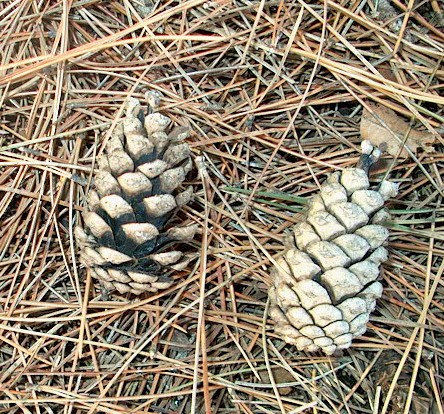I was walking under some pine trees near the Learning Campus and I took a picture of the cones I found.
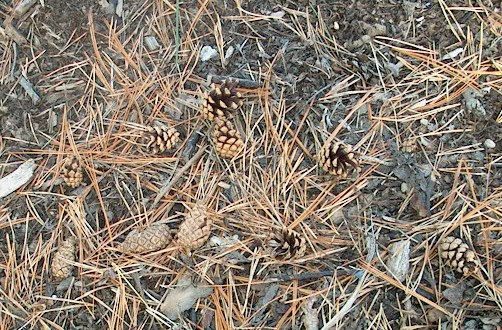
When I was young, I noticed there were two different kinds of cones — some solid cones like the three in the lower left corner of the picture, and others are more like the open, branched cones at the top. I thought the pine tree made two different kinds of cones. Actually, they are different forms of the same kind of cone. I will show you how this happens.
I took three cones that were the same size and shape. Then I soaked one cone in a bowl of water.
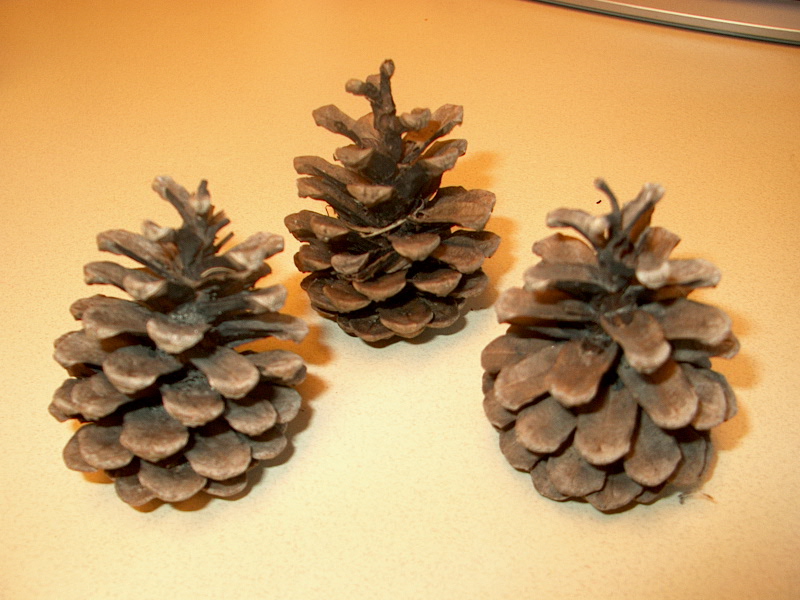
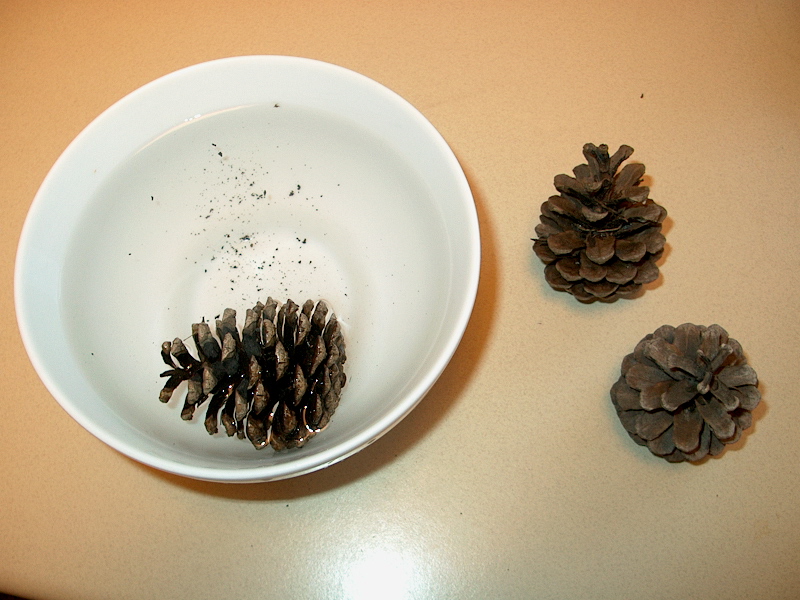
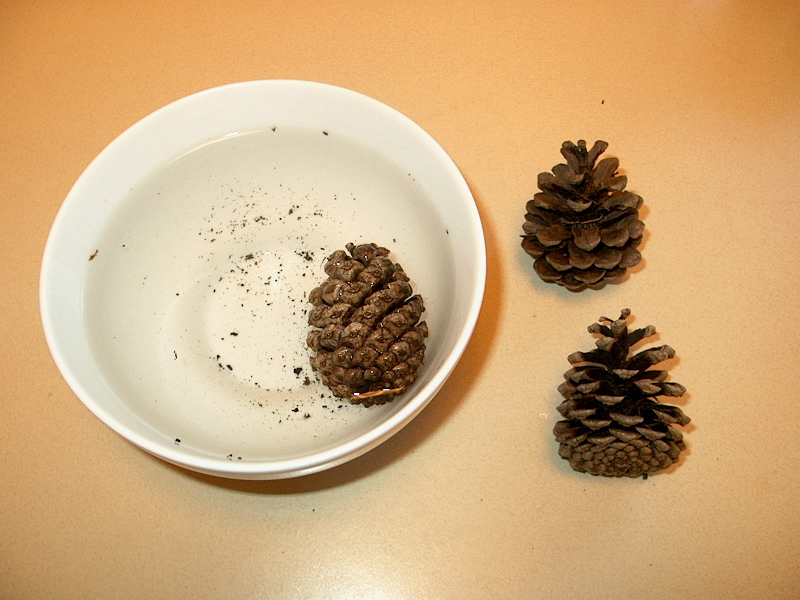

Then I let the wet and dry cones sit on my desk overnight. Guess what happened. Try it yourself to get the answer! Go outside and find a pine, spruce, or other conifer tree. Bring pine cones from those trees inside and watch them over time as they adjust to the warm, dry conditions in your home. Put one in bowl of water and see what happens. Let it dry and see if it changes again.
What is going on here?
Pine, spruce, Douglas-fir and other conifers are so named because they produce cones that bear their seed. When conditions are favorable for the seeds to fall and grow, the cones open and release them. The seeds have the best chance to survive when the air is dry and windy, so they can blow to a nice fertile spot away from the shade of the mother tree. When conditions are wet and not so good for a traveling seed, the cones close to protect them.
Though the cones I found under the tree had released their seeds a long time ago, they still responded to the moisture levels of the ground and air. These cones were in between being damp from the rain over the weekend and drying in the sun.
Pine cone history
By the way, all conifers belong to a group of plants called gymnosperms. This means they produce “naked seeds” — seeds that are not contained within a fruit. Conifers do not grow flowers. Before there were dinosaurs on the planet, all plants reproduced by either spores or naked seeds. The seeds of some conifers can take up to three years to mature. Flowering plants (angiosperms) have a much more rapid reproductive cycle. Some angiosperms flower and produce mature seed in just one week. Understanding how cones and flowers have evolved is what Dr. Pat Herendeen is trying to figure out from plant fossils.
©2013 Chicago Botanic Garden and my.chicagobotanic.org

